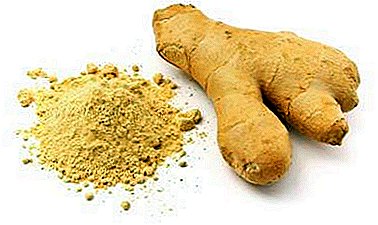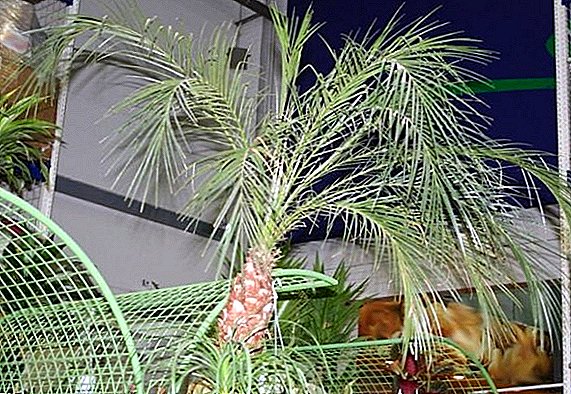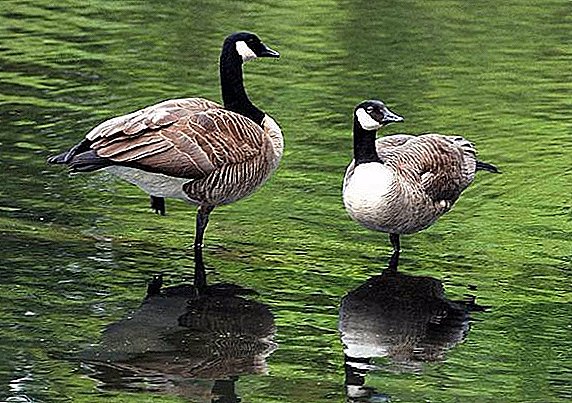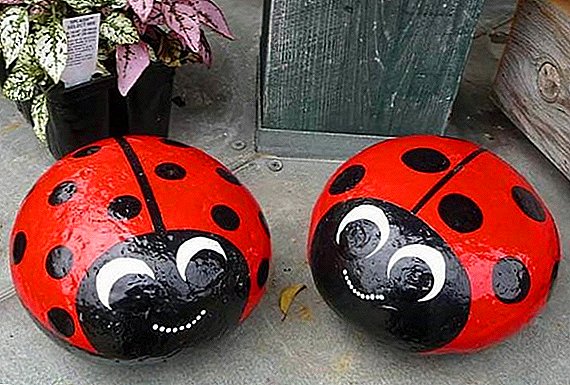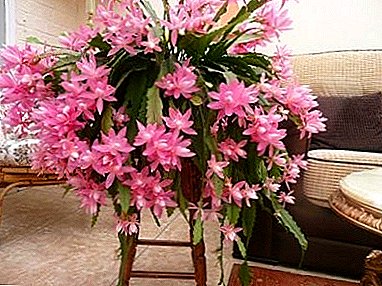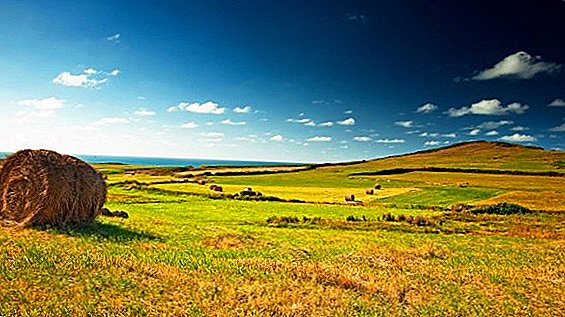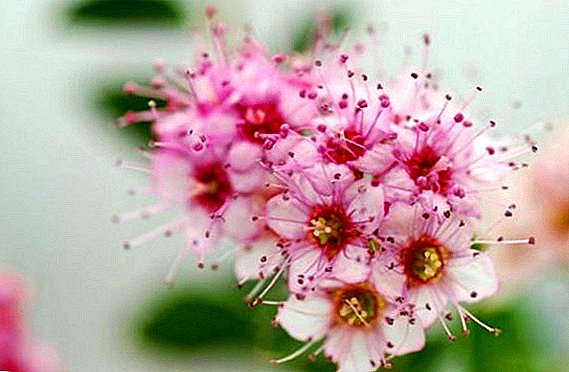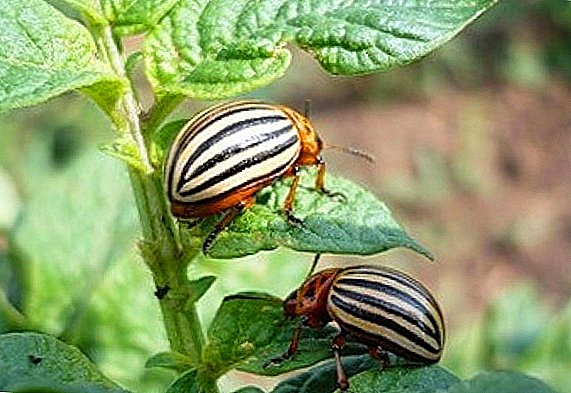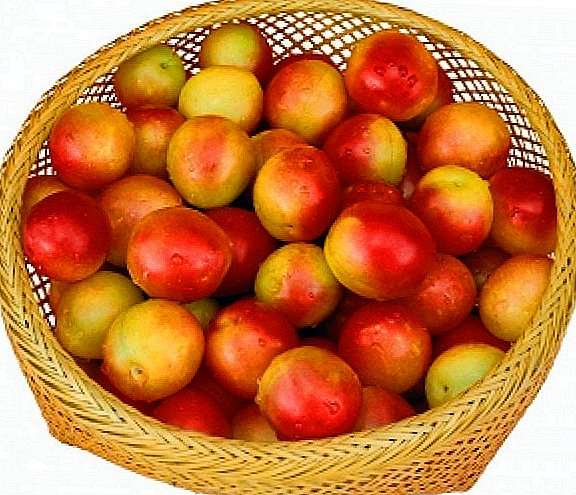
The cherry plum is a low tree, or even a bush,
which makes us taste sourish fruit
yellow or dark purple, small size.
She constantly gives very good yields, and it is not difficult to care for her.
In this article we will tell you how best to
take care of plum, about the intricacies of landing
and protecting the cherry plum tree after planting.
Preparing for planting plum
Preparing the soil for planting
Plant plum start with the choice of location and land preparation. Before landing Garden needs to take into account some points: plum does not tolerate drought, because it is considered a moisture-loving tree, but at the same time its flower buds are less resistant to winter cold and sub-zero temperatures.
Cherry plum will best grow in the south-western part of the garden, on the slope, the western and south-eastern part of the orchard will also suit. Should be consideredso that the terrain is protected from strong winds, frosts, drought, excess moisture and other adverse weather conditions.

Before planting seedlings, organic fertilizers are applied to the earth, including manure or humus, superphosphates and potassium salt are applied, then the plot is dug up. Mineral fertilizers are not applied on chernozem soils, as there is no benefit from this.
On soils that are not as fertile as chernozems, the amount of fertilizer applied depends on the degree of their fertility. Soils with increased acidity lime. In the landing pit make all the nutrients, except manure.
Selection of seedlings
Cherry plum trees Both annuals and two-year-olds are planted in the ground. Before buying them you need to pay attention to the root system, it must be strong and powerful, and have 5 main roots, the length of which is equal to 25-30 cm.
Graft trees are also planted, they enter fruiting early and recover much faster after frost.
Saplings are better to buy in fruit nurseries, and not from dubious sellers in the market.
Seedling preparation
Cherry plum root system, before planting in your garden, you need to carefully inspect. All sick, damaged, dried and infected roots are removed with a garden shears. The remaining healthy roots are also slightly trimmed, i.e., pruned.
Pruning sapling roots should pay attention on its color, if it is brown, then you need to remove it so that it is white, that is, to the place where the healthy root begins.

The next step, after trimming the roots, they need to dip in the mash. This will prevent the risk of drying, will restore the balance of lost moisture during transportation or improper storage of seedlings. Prepare it from a mixture of mullein and clay, but you can just from the ground.
The root system will be useful to soak in the Aktara solution, but it can also be used in another soil insecticide, which contributes to the protection of plants from pests, including the cockchafer, the wireworm.
Landing pit
Cherry plum tree will best grow on loamy soils with weak acidity. The groundwater level should be at least 1.5 meters deep from the ground surface.
A planting hole is dug up about 60 cm wide and up to 80 cm deep. If the soil is poor, the width of the hole increases to 70 cm. The preparation of the soil depends on the type of soil. If a sandy soils - the bottom of the pit is advised to fall asleep with a layer of clay, which is 15 cm thick.
For drainage, on wet soils, the bottom of the pit is laid out with rubble, broken brick or coarse sand. The drainage layer should be about 15 cm. Pits are dug up at a distance of 3 meters from each other.
The dug pit is fertilized. Humus, superphosphate, potassium chloride or wood ash are introduced into it. On poor soils, the amount of fertilizer is increased by 50%. To reduce soil acidity, one kilogram of lime is poured into each pit.
Cherry plum is planted so that the root neck remains 10 cm higher than the ground level. Be sure to ground the ground and formed the hole for irrigation. After planting the tree is cut.
Landing
Landing pattern
The interval between cherry plum seedlings directly depends on the climate where the trees grow, on the condition of the soil, i.e. fertility. In the southern locality on fertile soil, plum is planted at a distance of 4 meters from each other, and between rows 5, in the northern regions, 3 and 5 meters, respectively. Very close, so to speak, thicker, trees should not be planted.

At first, this seems like a bright prospect, saving space, you can plant more trees of different varieties, but when they grow, there is little space and they develop poorly.
Depending on the type of cherry plum and tree crown, itsriniato planted in a certain pattern: strong-growing trees 7 m between trees and 4 m between rows, middle - 5 m at a distance from each other, between rows 3 meters, and low-growing, respectively 4 and 1.5 meters.
Landing dates
Cherry plum planted in the fall and spring. It is important to have time to plant trees in early spring, before the beginning of April, while the plants are dormant, i.e. before budding, and in autumn it is necessary to have time to mid-September, at least one month before the first frost.
During late planting in the spring, the tree will often hurt and lag behind, and late planting in the fall can adversely affect the root system, it freezes out, since the plum tree does not have time to take root.
Landing depth
Root neck of a sapling Alycha, after the soil has settled, should always remain at ground level. If you plant is not very deep, the roots become bare, and the growth of overgrowth increases. But if you overdo it and plant it too deeply, then the risk of sapling may be inhibited, especially on hard, cold soils.
A slight deepening of the root collar on sandy and pebble soils is allowed, it is there that the negative effect of overheating of the soil, lack of moisture affects the cherry plum seedlings.
Departure after landing
The cherry plum tree, after planting, needs abundant watering, whether it is raining outside or not. Watering the trees 2-3 times, in spring and summer. Under one tree pour 4 buckets of water. The following watering is carried out in June, July and September. The land beneath the plants is loosened and weeded.

A complete and proper care consists in the timely application of fertilizers that affect the yield and growth of the tree. But, in the first year of growth, the plant is not fed, the amount of fertilizer that was applied at the time of planting is quite enough.
Under cherry plum, three times throughout the growing season fertilize: with the arrival of spring in March, at the end of May - at the beginning of June, during the period of growth of ovaries, and the third - in July or August, when laying buds for a new crop. Gardeners are advised to use nitrogen fertilizers.
In the second year Growth plum fed fertilizer with a nitrogen content. In the fourth year, they are fed with organic and phosphorus-potassium salts, they are introduced in the autumn during the garden digging.
To the most basic care items for cherry plum can be attributed:
• Weed control.
• Grounding the soil around the hole.
• Soil mulching. Peat, compost or humus mixed with chalk or dolomite flour is used.
• Formation of the crown.
• Fight against diseases and pests.
Growing plum, you should remember that it is impossible to spray it in summer, so you can burn the leaves, for a start it is better to try to process one branch, then all the rest.
Care
Pest and disease protection
Cherry plum suffer from such diseases, like gray rot (monoliosis), brown spot, smallpox, rust, gum treatment.
Brown spot appears on the leaves in the form of spots, the leaves gradually dry and fall off. Creep treatment is manifested in already diseased plants. The gray rot affects shoots that fade over time, the fruit of the tree rot, and a gray growth is formed in their place.
With smallpox, various spots appear on the leaves, the color becomes green instead of green - marble, the fruits take on a completely different unnatural shape, and spice ahead of time. A disease like rust appears on the streaks of a leaflet in the form of dark spots, then they fall off, and the tree can die even from a slight frost.
Cherry plum infect such insects as a saplings, western Gypsy bark beetle, downy silkworm, moth.

Although cherry plum is considered resistant to various diseases, fungal diseases also have a negative effect on it. It is powdery mildew, monilial burn. To protect the plant, it is necessary to carry out sanitary preventive measures, i.e., burn and remove infected branches and shoots, keep tidings clean, remove old bark and infected fruits, rake fallen leaves and get rid of weeds. Wounds on a tree trunk are cleaned and disinfected with copper sulfate solution.
Tree formation
In the first year, after planting, form a crown of cherry plum. It includes a certain number of skeletal branches, their density, the formation of branches of the second and third order and the trees that bear fruit. When forming the crown of a plant, pruned, shortened and thinned cuttings.
U cherry plum form four kinds of crowns - without tiered, rarefied and tiered, half-flat and flat. But other types of crowns are also used - hedge and palmetta. Mostly trees are pruned in the form of a non-tiered crown and a cup-shaped crown.
Cherry plum cut off and in the spring, and in the summer, and in the fall. But, it is right and best to prune trees in spring, before budding starts, somewhere in March or April. Deleting branches during this period is almost painless. And from the cut branches the juice does not flow, and they heal faster.
Summer pruning carry out only when small correction is necessary, or in the sanitary purposes. Cut dry and unnecessary branches, and those that grow inside the crown.
Autumn pruned cherry plum only for sanitary purposes. You can not worry too much that the removal of excessive branches, somehow affect the fruiting. Sick and dry branches are sure to be cleaned, as they can be carriers of pests and insects can live in them that negatively affect the tree. Cut down the fallen branches, and those that no longer bear fruit.
In winter, pruning is impossible. Because of the cold shoots become brittle and quickly break, and the wounds heal for a long time.
Fertilizer
Every year, under the plum tree, with the onset of late autumn, organic fertilizers are applied, about half a bucket of humus or compost per 1 m². And in early spring, as soon as the trees ottsvetut, and in mid-summer, the plant needs urea, it is brought into the tree trunk. At the next feeding make potassium sulfate, about 30 grams. on 1 m².
Watering
Young trees, after planting in the ground and pruning, watered. 4 buckets of water are considered to be the norm for watering on one tree. The following watering is carried out in the spring and early summer, approximately the number of waterings is 3 times.

Winter
In winter, frost has a negative effect on the roots and bark of the tree. The bright sun in winter can burn alyche, and winter precipitation in the form of snow or ice on the branches can break them.
Root system mulch leaves in late autumn. Mulching is done on half of the bayonet of the shovel, hay, sawdust, peat are added - all this is mixed with the ground, and wood ash is added, which is able to protect the tree from fungus and mice.
Tree trunk begin to mulch before the onset of the first frost, is not recommended before, as the bark can melt and damage. The first snow is thrown over the mulch with a shovel, making a snowdrift as high as possible, which is a guarantee of the harmful effects of frost.
Soil stop processing until early September. A good winter over the tree can help phosphate fertilizer, it is made in August. Do not forget about whitewashing tree trunks, its fork and skeletal shoots. For the winter, plum is covered with spruce leaves, wrapped with sacking.


